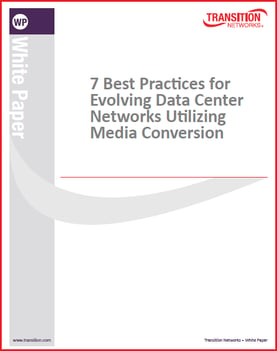The foundation of any data center network is the physical layer; the fiber and copper cables that connect users, servers, storage and, in the era of the Internet of Things, things. The always increasing demand on these networks requires data centers to constantly upgrade network size, reach, and throughput levels, which means frequently upgrading network equipment to the latest Ethernet standard.
Key trends such as virtualization, big data, cloud access and mobility are behind the increase in demand for bandwidth. And the network industry has responded with even more Ethernet variations, including new or emerging standards for 2.5 GbE, 5 GbE, 10 GbE, 25 GbE 40 GbE, 50 GbE, 100GbE and even 400GbE.
In this scenario of rapid change, media conversion is more important than ever to ensure connectivity, rapid service turn up and to maximize the cable plant investment.
 The ultimate need is for data center operators to have the ability to simplify infrastructure while accommodating bandwidth growth. Media conversion technology plays a key role, but must be implemented correctly in order to facilitate network connectivity without impacting network management or data security.
The ultimate need is for data center operators to have the ability to simplify infrastructure while accommodating bandwidth growth. Media conversion technology plays a key role, but must be implemented correctly in order to facilitate network connectivity without impacting network management or data security.
Media conversion products have evolved over the years to help support these needs. From the early days of stand-alone, unmanaged, fixed configuration media converters, the industry now offers chassis-based media conversion systems that provide a central point of wiring, small form factor pluggable (SFP) ports that can accept any network interface, and secure management with alarms and web access.
Media conversion is a critical network system, but too many purchase decisions are based solely on data sheet information or worse yet, from price lists. There is a difference in media converters and a strategic way to plan and implement them. The following 7 best practices provide a glimpse beyond the speeds and feeds to other key factors to consider when adding or expanding a media conversion system.
Learn more with Transition Networks by downloading the white paper! Download the white paper to read more.


.png?width=58&height=58&name=X_logo_2023_(white).png)
